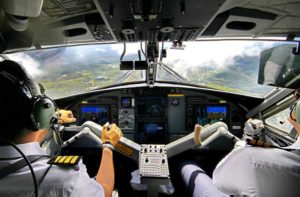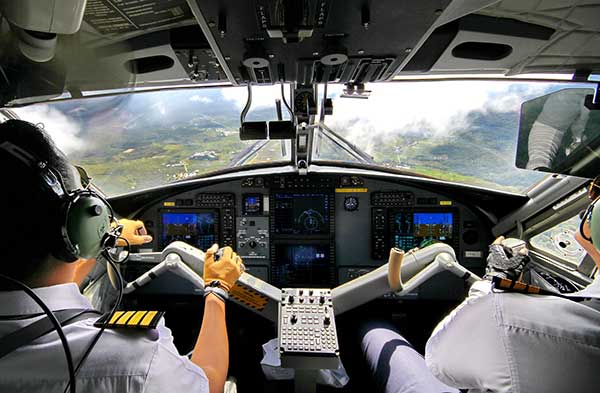Disclaimer: The information on our website is provided for general information purposes only. We make no representations or warranties of any kind, express or implied, about the completeness, accuracy, reliability, suitability or availability with respect to the website or the information contained on our website for any purpose. Any reliance on such information is therefore strictly at your own risk and we are not liable for any damages or losses arising out of or resulting from your reliance on any information contained on our website.
Military and commercial pilots fly and navigate aircraft like airplanes and helicopters. Airline pilots transport cargo and people on a planned flight and fixed schedule for an airline. Pilots can even work for tour companies. A commercial pilot flies aircraft for purposes like crop dusting, aerial photography, rescue operations, and other purposes. They work inside aircraft with variable schedules and typically spend a lot of time away from home.
Watch a video to learn more about becoming a commercial pilot:
How to Become an Airline and Commercial Pilot

Airline pilots usually require a bachelor’s degree in addition to a commercial pilot license and the Airline Transport Pilot (ATP) certificate from the Federal Aviation Administration (FAA). Typically, an aspirant begins their career as a commercial pilot and then gains the thousands of hours of flight experience needed to work for major or regional airlines. Those with military experience as a pilot can usually transfer to a civilian aviation directly into the airlines without working in commercial aviation because of their extensive training.
Commercial pilots require a high school diploma or the equivalent and have a commercial pilots license. There may be additional requirements depending on their specific type of job. They usually start out flight training with independent FAA-certified flight instructors or other flight training schools. There are some colleges and universities that offer pilot training. This training is part of a 2 or 4-year aviation degree.
All pilots require the FAA’s commercial pilot license before they can be paid to fly. An instrument rating is also needed to carry passengers of more than 50 miles from the point of origin or conditions that limit visibility, like clouds or at night. Interviewing for a job with major and regional airlines can be intense and reflect the FAA exams for instrument ratings, pilot licenses, and certificates.
Airlines normally conduct an aptitude and psychological test. Newly hired pilots also receive moderate on-the-job training for 6-8 weeks of ground school and 25 hours of flight time in accordance with Federal Aviation Regulations (FARs). All pilots must maintain experience in performing particular maneuvers and procedures for a given number of times in a specific amount of time and receive periodic training and medical examinations.
Job description of a Airline and Commercial Pilot
The duties of a pilot typically include checking the overall condition of the aircraft before and after every flight. They ensure their aircraft is below its weight limit and balanced, as well as checking the fuel supply and weather conditions. They must submit flight plans to air traffic control and communicate with them through the aircraft’s radio system.
He or she operates and controls the aircraft during take-off and landing and along planned routes. An airline and commercial pilot has the job of monitoring engines, fuel consumption and other systems during the flight. They navigate the aircraft by using visual references and cockpit instruments. He or she must know how to respond to emergencies or changing weather conditions. Other duties would depend on the type of pilot and his or her specific job requirements.
Article Citations
Bureau of Labor Statistics, U.S. Department of Labor, Occupational Outlook Handbook, Airline and Commercial Pilots.
National Center for O*NET Development. 53-2012.00. O*NET OnLine.

